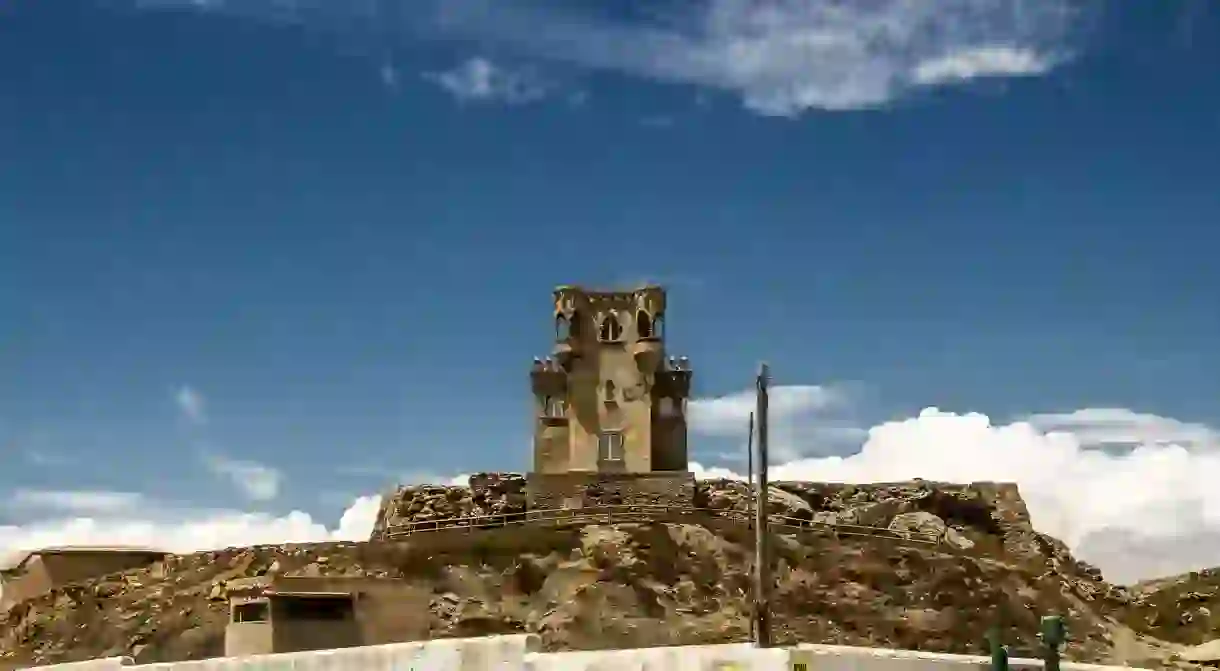A Walking Tour of Tarifa's Architectural Landmarks

Such is the compact nature of Tarifa that all of its most notable buildings can be visited in a day, on foot. Read on for our guided walking tour of this trendy town’s architectural landmarks.
Tarifa is home to several notable buildings, from an impressive 10th-century castle to a striking public library. Below, we take you on a walking tour of the town’s architectural gems, starting with the only medieval gateway to the town that remains.
Puerta de Jerez
Building

Kickstart your walking tour of Tarifa’s architectural gems on the northern side of the old town, with the Puerta de Jerez. This is the only one of four medieval entrances to the town still standing and, as its name suggests, once opened onto the northbound road to Jerez de la Frontera. Above the Moorish-style archway is a plaque remembering the date in 1292 when Tarifa fell to the Christians.
The Old Town
Building

Strolling under the chunky Puerta de Jerez takes you into the oldest and most beautiful part of Tarifa. It’s an intriguing grotto of traditional Andalusian townhouses, most of them painted in white and bright Mediterranean blue. Some were abandoned a long time ago and have since been at the mercy Tarifa’s bracing winds and strong sun, thus developing a shabby charm all their own.
Iglesia de San Mateo
Building

Iglesia San Mateo is located on a street in the old town named after the Christian King who captured Tarifa from the Moors in 1292 (Sancho IV “The Brave”). The stunning Baroque façade dates from the late 18th century, whilst the church itself was built during the early 1500s. Notable features inside a Visigoth tombstone and some beautiful 18th century wood sculptures.
Iglesia San Francisco de Asis
Church

From the Iglesia San Mateo, it’s a three-minute walk down the street to another of Tarifa’s most beautiful churches. Tucked in between two townhouses, with a façade partly obscured by colourful flowers, is the 16th-century Iglesia San Francisco de Asis. Between 1794 and 1797, the building was extensively renovated owing to its decaying state, resulting in the Baroque and Neoclassical hybrid we see today.
Colegio Cervantes
Building

It won’t take you more than five minutes to walk from the San Francisco church to the old quarter’s main square, Plaza de Santa Maria (or Plaza de la Ranita – “Little Frog Square” – as it’s known locally). On the plaza’s east side is the arresting Colegio Cervantes, looking a little like a miniature, whitewashed Alhambra. Built in the early 1900s in a neo-Mudejar style, it now houses the public library and historical archives.
Castillo de Guzman el Bueno
Building

Make Tarifa’s mighty Castillo de Guzmán el Bueno (Castle of Guzman the Righteous) the penultimate stop of your walking tour. Reached via a three-minute walk from the Colegio Cervantes, the castle was built in the 10th century on the orders of the Caliph of Córdoba. It’s named after Alfonso Perez el Guzman, the commander who sacrificed his own son to save Tarifa from a Moorish siege in 1294.
Castillo de Santa Catalina
Building

The finale of your walking tour takes you to most southwesterly tip of Continental Europe’s most southwestern town. Here stands the somewhat incongruous Castillo de Santa Catalina, perched by itself atop a rocky hill. Built in the 1930s as a watchtower, it was heavily damaged Spain’s 1936-39 Civil War and thereafter stood abandoned. You’ll have to be content with admiring it from afar, as it’s currently closed to the public













